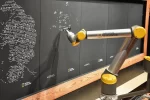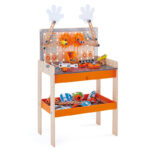Curiosity and experimentation are essential for children to develop a strong foundation in STEM (Science, Technology, Engineering, and Mathematics) education. Children who are curious and enjoy experimenting are more likely to develop a lifelong love for learning and problem-solving. It is crucial to provide opportunities for sparking curiosity in children to explore, question, and experiment in a safe and supportive environment.
Research
A study published in the Journal of Research in Science Teaching found that inquiry-based science education, which focuses on students’ curiosity and questioning, improved students’ achievement in science and enhanced their critical thinking skills (Akerson, Cullen, & Hanson, 2009).
Another study published in the Journal of Experimental Child Psychology found that children who were encouraged to play and experiment with blocks showed significant gains in their spatial skills, which are essential for success in STEM fields (Verdine, Golinkoff, Hirsh-Pasek, & Newcombe, 2014).
Research also suggests that exposure to STEM activities at an early age can lead to long-term interest and engagement in STEM fields. A study published in the Journal of Early Childhood Research found that children who participated in STEM activities in preschool had a higher likelihood of pursuing STEM majors in college (Liu, Gomez, & Khan, 2020).
Ideas for Sparking Curiosity in Children
Here are some ideas to spark curiosity and experimentation in children:
- Conduct Simple Science Experiments: Science experiments are an excellent way to spark curiosity and experimentation in children. You can start with simple experiments that require household items, such as the classic vinegar and baking soda reaction. As children become more comfortable with the process, you can introduce more complex experiments.
- Encourage Questions: Children are naturally curious, and they ask a lot of questions. Encourage their curiosity by answering their questions and providing opportunities for them to explore further. It is essential to create a safe and supportive environment where children feel comfortable asking questions and expressing their thoughts.
- Build with Blocks: Building with blocks is an excellent way to foster creativity and experimentation in children. Encourage them to build structures and experiment with different materials to see what works and what doesn’t.
- Play with Technology: Technology is an integral part of our lives, and it can be a powerful tool for sparking curiosity and experimentation in children. Introduce children to coding with fun and engaging games or toys like the robot Dash and Dot.
- Explore Nature: Nature is a fantastic playground for children to explore and experiment. Take children on nature walks and encourage them to observe and ask questions about the world around them. You can also create a backyard garden and teach children about plant growth and sustainability.
- Conduct Kitchen Science Experiments: The kitchen is a perfect place to conduct simple experiments that can teach children about chemical reactions and the properties of different materials. For example, mixing oil and water, baking a cake, or making homemade ice cream.
Conclusion
Research supports the importance of sparking curiosity and experimentation in children for their STEM education and overall development. It has also been proven to be essential for their academic and personal growth. By encouraging children to ask questions and providing opportunities for children to explore and experiment, we can help them develop critical thinking skills, spatial reasoning abilities, and a lifelong love of learning.






